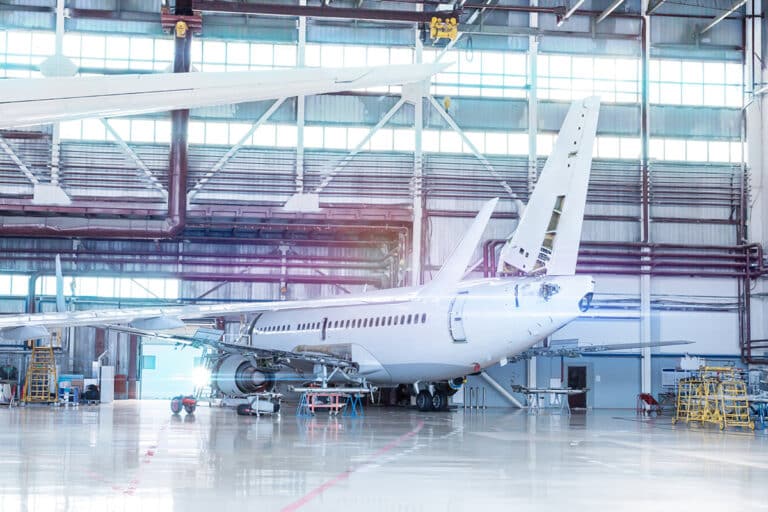From drone batteries to laser beams, here’s what’s powering drones
As the drone industry continues expanding, manufacturers are investing more and more money into research and development.
Typically, the latest press releases focus on better cameras or the capabilities of embedded software. Often overlooked, but just as important, is the drone’s power source.
Like most powered vehicles, there are several options drone manufacturers can choose from when designing their UAVs. And as with most innovations, there are pros and cons for each.
By far, the most popular drone power source for commercial UAVs currently on the market are batteries – specifically lithium polymer (LiPo).
But, as other sources become more efficient, that may change in the not-so-distant future.
Drone Batteries
As the most common drone power source, you’re probably familiar with LiPo batteries.
LiPo powers more than just drone batteries; they power a wide variety of electronic devices.
The benefits of this power source are their light weight, ability to store decent amounts of energy, and high discharge rates.
Basically, they offer the power storage and output needed by most commercial drones.
But, just because they get the job done doesn’t mean they’re without their downsides. LiPo drone batteries have a short lifespan (the number of times you can charge them), chemical sensitivity (mistreat them and they can start a fire), and of course, they use up energy fast.
LiPo battery power is often measured in minutes rather than hours or days. This means even simple projects require planning for more drone batteries, or downtime for charging.
Still, for most customers they remain the best option currently on the market.
Hydrogen Fuel Cells
Several companies have already designed hydrogen fuel cells for some of the most popular commercial drones on the market.
This power-dense system offers much longer flight times than LiPo drone batteries, allowing operators to take on more complex missions.
The technology is expensive however, one of its significant drawbacks. Hydrogen fuel cells are also larger in size and require hydrogen tanks for refueling.
This makes for a more complex power management system and increases the amount of time needed to refuel.
Solar-Powered Drones
As solar technology continues to improve, it remains an intriguing option.
Not only is the idea of clean energy an appealing one, it holds the potential for very long flight times.
Solar panels are already in use on several research drones, particularly fixed-winged platforms. However, the promise of limitless power from the sun poses a variety of challenges.
Providing enough power to keep a drone in flight requires a sizeable surface area for solar cells. These panels are heavy and add significant weight.
This results in a tricky balancing act on an engineering level. The heavier the drone, the more solar panels it needs for power – which in turn makes it heavier still.
Although it’s an option that works for some drones, it’s just not suitable for everyone. In fact, even well-funded major players such as Google threw in the towel on solar-powered drones.
Combustible Engine
Engines are great for many applications, but unless you plan to fly military-grade drones like the Global Hawk – powered by a Rolls-Royce AE 3007 – combustible engines are rarely ideal.
Although this power source can support UAVs, it’s heavy, loud, and requires a lot of maintenance.
Tethered Drones
Unlike most drones, tethered drones are not entirely disconnected from the ground.
A specialized cable links the drone to a base station as the aircraft hovers. The cable provides electrical power for the drone and often includes a fiber optic cable for the transmission of data between the drone and base station.
While the tether and the base station make the drone less mobile (unless the base station is mounted to a vehicle), a tethered UAV can remain airborne for many hours, even up to a full day.
This power source is perhaps the best answer for the limitations seen in LiPo batteries.
The Future of Drone Power Sources
Researchers are always trying out new ideas and technologies. Some are proven concepts, while others are more like science fiction than science fact.
Combinations of known power sources, such as hybrid engines, are proven to work in applications such as automobiles. These systems might one day be a viable power source for drones as well.
Another fascinating development is that of optical power technology.
A Washington State based company, PowerLight Technologies, has developed a method that holds the potential to keep a drone airborne indefinitely.
Using lasers and specially designed photovoltaic cells, the company can beam light to a sensor to create electrical power. They’ve already set three world records and won contracts with NASA.
Bringing it Together
Power sources are an essential aspect of UAV technology that often gets overlooked. But just because they rarely grab headlines doesn’t make them any less fascinating or important.
From tried-and-true LiPo batteries, to gas engines, to drone power sources that are still in development, every choice has benefits and drawbacks.
Understanding the pros and cons of each of these will help you choose the best power source for your particular application.
So, which drone is right for you? And, how do you get started? Do you hire out or bring your drone program in-house?
At Consortiq, we help you find a better way with drones, from consultation and program implementation to actually doing the work for you.
Ready to learn more? Just complete the form below to schedule a risk-free consultation!

David Daly - Contributing Author
David Daly, is an award-winning photographer/writer and licensed (FAA) Commercial sUAS pilot. A graduate of the United States Naval Academy, David is a former Marine Corps officer with a BS in Oceanography and has earned his MBA from the University of Redlands. David has worked for Fortune 100 companies and has a background in aerospace, construction, military/defense, real estate, and technology.



